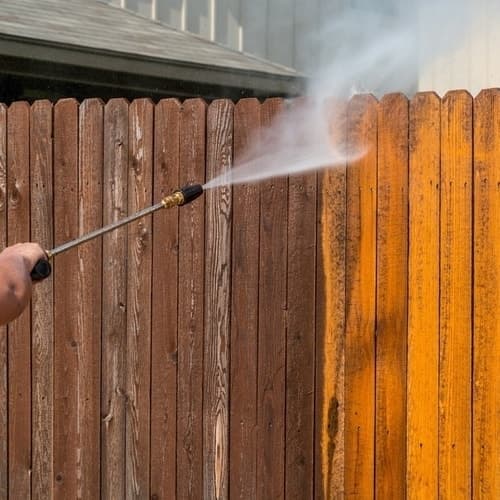Exactly How to Choose the Right Fence Stain for Your Building
When it comes to improving the appearance and sturdiness of your home's fencing, choosing the ideal tarnish is an important decision that requires cautious factor to consider. How can you ensure that you choose the perfect fence discolor that aligns with your home's style and upkeep demands?
Recognizing Timber Kind
To choose the suitable fence discolor, it is crucial to have an extensive understanding of the different types of timber typically used for fencing. When selecting a fencing tarnish, it is crucial to take into consideration the kind of wood being used to guarantee compatibility and optimal protection. Recognizing the features of various timber types will certainly aid you make an informed decision when it comes to picking the right fencing discolor for your residential property.
Selecting the Right Shade
Selecting an appropriate tone for your fence tarnish is an essential choice that dramatically affects the general visual appeal of your residential or commercial property. The color you select must match the design of your home, mix harmoniously with the surroundings, and mirror your personal preference. When picking a color, consider the existing shade palette of your building. For an all-natural look, natural tones like browns, eco-friendlies, or grays function well. These colors can help the fence mix into the landscape and develop a cohesive look. If you choose an even more modern or strong appearance, think about selecting darker tones like black or deep charcoal for a striking contrast. Lighter shades such as whites or light grays can make a fence show up bigger and include a touch of elegance to your property. Ultimately, the right color choice will certainly enhance the elegance of your fencing and boost the total curb charm of your home.

Considering Transparency Levels
When picking the appropriate color for your fence stain, an additional crucial facet to consider is the level of openness that will certainly finest suit your home's visual and upkeep requirements. Openness degrees in fencing stains typically drop right into 3 classifications: clear, semi-transparent, and solid. Take into consideration the degree of exposure your fence encounters, the desired upkeep regularity, and the aesthetic you desire to attain when choosing the ideal openness level for your fencing stain.
Evaluating Maintenance Needs
Thinking about the durability and upkeep of your fence, evaluating the maintenance requirements is vital in establishing the most suitable fence stain for your residential property. The level of maintenance needed for your fence can vary depending on factors such as the sort of timber, climate problems in your location, and your personal preferences.
When evaluating maintenance demands, it is vital to consider the sturdiness of the fence discolor. Some stains require even more regular reapplication than others, so selecting a discolor with a longer lifespan can help in reducing the general maintenance demands of your fencing (Fence Staining Service). In addition, aspects such as resistance to UV rays, water, and mildew can impact exactly how commonly you need to re-stain your fence

Testing Samples Before Application
Prior to using any type of fence tarnish, it is a good idea to perform sample examinations to guarantee compatibility with the wood and wanted visual result. Evaluating examples enables you to evaluate how the tarnish will interact with the particular type of timber utilized in your fencing, as different timbers can my review here take in stains differently. To start, select a tiny low-profile area of the fencing to apply the discolor samples.
Conclusion
To conclude, choosing the ideal fencing stain for your home entails comprehending the timber type, choosing the ideal shade, thinking about openness levels, reviewing maintenance demands, and screening samples prior to application (Fence Staining). By taking these variables into factor to consider, you can guarantee that your fencing stain matches your residential or commercial property while giving the required defense and toughness. Make an informed decision to boost the appearance and durability of your fence